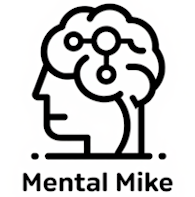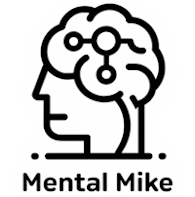Recovery is not just about what you stop doing, it’s about what you start aligning with. For many clients, mornings feel like enemy territory: grogginess, emotional heaviness, physical withdrawal, or a creeping urge to escape the day before it even begins. The solution might be simpler, and more biologically profound, than we’ve been taught: morning light.
Within the Unified Flux Model (UFM), light is more than a visual phenomenon. It is a carrier of frequency, a biological messenger, and an energetic invitation. Proper exposure to natural light in the early hours can help reset not only your circadian rhythm but also your neurochemical stability, emotional regulation, and energetic flow.
In this blog, we’ll explore the science of morning light, the spiritual symbolism of dawn, and how harnessing this daily window can dramatically reduce cravings and restore coherence.
The Circadian Clock: Your Inner Metronome
Every human being has a 24-hour internal rhythm - the circadian clock - regulated by a master clock in the suprachiasmatic nucleus (SCN) of the hypothalamus. This biological metronome governs cycles of:
The primary cue, or zeitgeber, for this master clock is light - specifically, natural light hitting the retina in the first 60 minutes of the day (Shan et al., 2019).
When this cue is received, it:
Addiction, Light Disruption, and the Cycle of Craving
Substance use disorders dysregulate this entire system. In recovery, many clients experience:
Why? Because during active addiction, the circadian rhythm is often entrained to drug cues rather than solar cues. For example, late-night cocaine use or alcohol-induced sedation reprograms the brain to function outside of natural time. Recovery, then, is not just about quitting, it’s about recalibrating your body's relationship with the sun.
Studies now show that aligning with natural light exposure can reduce depression, anxiety, and substance craving, especially when morning light is prioritized (Wulff et al., 2010; Bedrosian & Nelson, 2017). In UFM, we expand this further to explain that light carries coherent energy, and the practice of receiving it is not only biological but also energetic reattunement.
How Morning Light Regulates Energy and Emotion
The early hours of the day offer a unique physiological and spiritual opportunity. Here’s what happens when you step outside within 30 - 60 minutes of waking, without sunglasses or window barriers:
1. Resetting the Dopamine Clock
Dopamine, a neurotransmitter central to reward, pleasure, and goal-directed behavior, surges in response to morning light. This anchors motivation and resilience throughout the day and reduces the baseline hunger for “quick fixes” like sugar, screens, or substances (Brown et al., 2021).
2. Cortisol Awakening Response
Cortisol rises sharply after waking, in a rhythm known as the CAR. Morning light amplifies this rise, promoting alertness and readiness. If cortisol spikes too late in the day (due to light deficiency), it fuels anxiety, cravings, and insomnia.
3. Melatonin Suppression and Night Prep
Proper morning light suppresses melatonin efficiently, which helps it return on time that evening. This synchrony supports deeper sleep, and as previous posts explain, sleep is a foundational pillar of recovery.
The UFM Interpretation: Light as Coherence
In the Unified Flux Model, we teach that morning light is not just about science, it’s a symbolic and energetic initiation. Dawn represents:
Each photon carries frequency. When morning light enters the eye, it activates not only retinal ganglion cells but deeper energetic pathways - including pineal gland calibration, third-eye opening in spiritual traditions, and heart coherence in trauma recovery.
"To stand barefoot on the earth, eyes open to the sun, breath steady, is to declare: I am part of this cycle. I belong to this day. I am resetting my field."
Craving Cycles and the Role of Light
One of the most underappreciated aspects of relapse prevention is the role of light-timing in modulating craving. Most clients report:
Here’s how light helps regulate each:
Avoiding blue light at night preserves melatonin and sleep quality, lowering nighttime relapse risk.
By entraining the nervous system to natural light, clients begin to feel more “anchored” in time -less scattered, less reactive, more inhabited. And the craving doesn’t disappear by force, it fades by realignment.
Morning Light Ritual (UFM Practice)
We recommend this as a daily energetic hygiene practice for all clients:
Name: Morning Flux Activation
Time: Within 30 minutes of waking
Steps:
Duration: Just 2–10 minutes is enough. But more is welcome.
When Light Is Scarce: Alternatives and Aids
Some climates or lifestyles make morning sunlight difficult. In these cases, we suggest:
These tools help approximate natural rhythms in environments where artificial light has dominated.
Final Words: The Dawn as Medicine
In addiction, time warps. Nights stretch, mornings blur, days collapse. One of the greatest gifts of recovery is the return of orientation—not just to self, but to life’s rhythm. Morning light is not a luxury. It is a primordial medicine, available to all who seek to heal. In UFM, we treat it as sacred - a force that clears confusion, regulates mood, and nourishes the field. It is subtle but profound. Free, yet powerful.
If you’ve been waking up lost, heavy, or in withdrawal - step outside tomorrow. Feel the light meet your face. Breathe. Let the rhythm of the sun become your own.
You’re not just resetting your clock.
You’re reclaiming your coherence.
Within the Unified Flux Model (UFM), light is more than a visual phenomenon. It is a carrier of frequency, a biological messenger, and an energetic invitation. Proper exposure to natural light in the early hours can help reset not only your circadian rhythm but also your neurochemical stability, emotional regulation, and energetic flow.
In this blog, we’ll explore the science of morning light, the spiritual symbolism of dawn, and how harnessing this daily window can dramatically reduce cravings and restore coherence.
The Circadian Clock: Your Inner Metronome
Every human being has a 24-hour internal rhythm - the circadian clock - regulated by a master clock in the suprachiasmatic nucleus (SCN) of the hypothalamus. This biological metronome governs cycles of:
- Wakefulness and sleep
- Hormone release (like cortisol and melatonin)
- Body temperature
- Hunger and digestion
- Dopamine and serotonin production
The primary cue, or zeitgeber, for this master clock is light - specifically, natural light hitting the retina in the first 60 minutes of the day (Shan et al., 2019).
When this cue is received, it:
- Suppresses melatonin (the sleep hormone)
- Increases cortisol (to energize the body)
- Begins a ~14–16 hour timer for melatonin to rise again at night
- Stimulates dopamine release, creating motivation and pleasure
Addiction, Light Disruption, and the Cycle of Craving
Substance use disorders dysregulate this entire system. In recovery, many clients experience:
- Delayed sleep phase syndrome (trouble falling asleep or waking on time)
- Daytime fatigue despite long sleep durations
- Craving surges between 4 - 7 p.m. or late night
- Mood swings or depressive symptoms in the morning
Why? Because during active addiction, the circadian rhythm is often entrained to drug cues rather than solar cues. For example, late-night cocaine use or alcohol-induced sedation reprograms the brain to function outside of natural time. Recovery, then, is not just about quitting, it’s about recalibrating your body's relationship with the sun.
Studies now show that aligning with natural light exposure can reduce depression, anxiety, and substance craving, especially when morning light is prioritized (Wulff et al., 2010; Bedrosian & Nelson, 2017). In UFM, we expand this further to explain that light carries coherent energy, and the practice of receiving it is not only biological but also energetic reattunement.
How Morning Light Regulates Energy and Emotion
The early hours of the day offer a unique physiological and spiritual opportunity. Here’s what happens when you step outside within 30 - 60 minutes of waking, without sunglasses or window barriers:
1. Resetting the Dopamine Clock
Dopamine, a neurotransmitter central to reward, pleasure, and goal-directed behavior, surges in response to morning light. This anchors motivation and resilience throughout the day and reduces the baseline hunger for “quick fixes” like sugar, screens, or substances (Brown et al., 2021).
2. Cortisol Awakening Response
Cortisol rises sharply after waking, in a rhythm known as the CAR. Morning light amplifies this rise, promoting alertness and readiness. If cortisol spikes too late in the day (due to light deficiency), it fuels anxiety, cravings, and insomnia.
3. Melatonin Suppression and Night Prep
Proper morning light suppresses melatonin efficiently, which helps it return on time that evening. This synchrony supports deeper sleep, and as previous posts explain, sleep is a foundational pillar of recovery.
The UFM Interpretation: Light as Coherence
In the Unified Flux Model, we teach that morning light is not just about science, it’s a symbolic and energetic initiation. Dawn represents:
- The return of clarity after darkness
- The daily opportunity to realign with source energy
- The gentle restoration of conscious will
Each photon carries frequency. When morning light enters the eye, it activates not only retinal ganglion cells but deeper energetic pathways - including pineal gland calibration, third-eye opening in spiritual traditions, and heart coherence in trauma recovery.
"To stand barefoot on the earth, eyes open to the sun, breath steady, is to declare: I am part of this cycle. I belong to this day. I am resetting my field."
Craving Cycles and the Role of Light
One of the most underappreciated aspects of relapse prevention is the role of light-timing in modulating craving. Most clients report:
- Morning emotional vulnerability
- Mid-afternoon lethargy or boredom
- Evening craving spikes
Here’s how light helps regulate each:
- Morning light stabilizes dopamine and serotonin, reducing impulsivity and hopelessness.
- Midday sun exposure (even for 5 minutes) boosts energy without needing sugar or caffeine.
Avoiding blue light at night preserves melatonin and sleep quality, lowering nighttime relapse risk.
By entraining the nervous system to natural light, clients begin to feel more “anchored” in time -less scattered, less reactive, more inhabited. And the craving doesn’t disappear by force, it fades by realignment.
Morning Light Ritual (UFM Practice)
We recommend this as a daily energetic hygiene practice for all clients:
Name: Morning Flux Activation
Time: Within 30 minutes of waking
Steps:
- Step outside or near an open window with direct sunlight.
- Remove sunglasses or barriers. Gaze near the sun, not directly at it.
- Take 3 deep breaths into the belly.
- Say: “I rise with the light. I belong to this day.”
- Feel the light enter the eyes, the skull, the chest—resetting your system.
Duration: Just 2–10 minutes is enough. But more is welcome.
When Light Is Scarce: Alternatives and Aids
Some climates or lifestyles make morning sunlight difficult. In these cases, we suggest:
- 10,000 lux full-spectrum light boxes for 20–30 minutes each morning (Moyer et al., 2017)
- Blue-light blocking glasses after 7 p.m. to preserve melatonin
- Red-spectrum night lights to reduce circadian disruption
These tools help approximate natural rhythms in environments where artificial light has dominated.
Final Words: The Dawn as Medicine
In addiction, time warps. Nights stretch, mornings blur, days collapse. One of the greatest gifts of recovery is the return of orientation—not just to self, but to life’s rhythm. Morning light is not a luxury. It is a primordial medicine, available to all who seek to heal. In UFM, we treat it as sacred - a force that clears confusion, regulates mood, and nourishes the field. It is subtle but profound. Free, yet powerful.
If you’ve been waking up lost, heavy, or in withdrawal - step outside tomorrow. Feel the light meet your face. Breathe. Let the rhythm of the sun become your own.
You’re not just resetting your clock.
You’re reclaiming your coherence.
References
Cryan, J. F., O’Riordan, K. J., Cowan, C. S., Sandhu, K. V., Bastiaanssen, T. F., Boehme, M., ... & Dinan, T. G. (2019). The microbiota-gut-brain axis. Physiological Reviews, 99(4), 1877–2013. https://doi.org/10.1152/physrev.00018.2018
Jacka, F. N., O'Neil, A., Opie, R., Itsiopoulos, C., Cotton, S., Mohebbi, M., ... & Berk, M. (2017). A randomised controlled trial of dietary improvement for adults with major depression (the ‘SMILES’ trial). BMC Medicine, 15(1), 23. https://doi.org/10.1186/s12916-017-0791-y
Mayer, E. A. (2016). The mind-gut connection: How the hidden conversation within our bodies impacts our mood, our choices, and our overall health. Harper Wave.
Jacka, F. N., O'Neil, A., Opie, R., Itsiopoulos, C., Cotton, S., Mohebbi, M., ... & Berk, M. (2017). A randomised controlled trial of dietary improvement for adults with major depression (the ‘SMILES’ trial). BMC Medicine, 15(1), 23. https://doi.org/10.1186/s12916-017-0791-y
Mayer, E. A. (2016). The mind-gut connection: How the hidden conversation within our bodies impacts our mood, our choices, and our overall health. Harper Wave.



